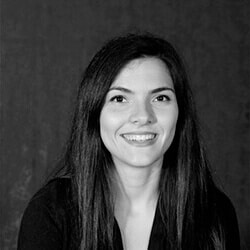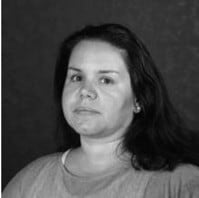Written by Kiriaki Kostanaki and Evi Adelfopoulou
Teaching in an International school, such as Pinewood American International School of Thessaloniki, is always a challenging experience. Teachers have to deal with a diverse classroom composed of students that come from different countries, cultural backgrounds, and different educational systems. All of these characteristics make differentiated teaching essential.
What is differentiated teaching?
Carol Ann Tomlinson is a leader in the area of differentiated learning and Professor of Educational Leadership, Foundations, and Policy at the University of Virginia. Drawing on the work of Tomlinson, we understand that differentiated teaching is not a strategy or a special technique. It is a way of thinking. The teachers do not need to come up with A pre-planned set of strategies. They just need to reevaluate classroom structures and functions in their entity. They do not command the classroom. They facilitate the time and space of students. They engage students themselves in learning and being responsible for that. Differentiated instruction should not be confused with the individualized instruction model. What we try to do is to address learners’ different needs, rather than planning one lesson for everyone and adjusting it when it does not work for some students.
There are many reasons for implementing differentiated instruction in the classrooms of the 21st century. Consider the following groups of students and the impact differentiation can make for them.
- Cultural diversity
- Multilevel classes (international character of school)
- Special Educational Needs students (SEN)
- Student transition
- English Language Learner students (ELL)
Differentiated Instruction: Techniques and Strategies
A differentiated classroom shares clear learning goals and expectations for all students, as it sets as principals the individual growth and the personal best of students. Therefore, teachers can use a variety of strategies and approaches in response to student differences in readiness, interests, and learning needs. Tomlinson explains that in consideration of the above, curriculum can be differentiated in three ways: by content, process, and product. All methods have one thing in common, the students’ needs.
 When the lesson is based on differentiation by content, what varies are the materials that are used. Activities such as flip books, highlighted texts, and reading buddies are some of them.
When the lesson is based on differentiation by content, what varies are the materials that are used. Activities such as flip books, highlighted texts, and reading buddies are some of them.
Open-ended tasks is the differentiation by process. Tasks ranged from simpler to more complex give more than one correct answer and encourage the students’ active thinking.
The teacher can assign different products to students, each one with its own rubric. An example of a different product could be a poster displaying the main concepts of the lesson, or key details, or even questions students may have of the lesson.
The expectation of differentiating can, of course, become a little overwhelming when we talk about teaching in a second/foreign language in an international school. The different learning language levels of the students, along with the similarities of their native language, can lead to the need for deeper differentiated instruction.
In order to overcome these difficulties and accommodate our students' needs in a multi level classroom, we chose to use strategies such as peer evaluation teaching, activities based on role playing, and visual materials. Moreover, the implementation of Information Technology by using online quizzes for assessment, together with an online platform that facilitates online learning, have proven to be very useful and interesting in the teaching process.
Lesson Plan Development
Another strategy that may be misunderstood is lesson planning; a strategy that is more than useful and efficient. But why is it so important?
- Scaffolds learning
- Supports teachers in seeing they have covered all objectives
- Promotes student confidence because they know what to expect
- Divides concepts and tasks to more manageable learning packets
For these reasons lesson plan development is considered to be more than necessary. It is important for the teacher to decide and organise the lesson plan details in advance which sometimes proves to be a helpful but time demanding procedure.
 Kiriaki was born and raised in Thessaloniki, Greece. She has been teaching Greek as a foreign language for the last 8 years. Kiriaki holds a BSc in Greek Philology, BSc Social and Education Policy, Msc Sciences of Education and Lifelong Learning, ICT in Education from Aristotle University of Thessaloniki. The last three years her research interests involve the implementation of IT in the teaching progress along with the differentiated instruction. "Education is not preparation for life, Education is life itself" John Dewey.
Kiriaki was born and raised in Thessaloniki, Greece. She has been teaching Greek as a foreign language for the last 8 years. Kiriaki holds a BSc in Greek Philology, BSc Social and Education Policy, Msc Sciences of Education and Lifelong Learning, ICT in Education from Aristotle University of Thessaloniki. The last three years her research interests involve the implementation of IT in the teaching progress along with the differentiated instruction. "Education is not preparation for life, Education is life itself" John Dewey.
 Evi was born and raised in Thessaloniki, Greece. She holds an MSc in Greek Philology from Aristotle University. At Pinewood, she teaches in the Secondary Greek Department and serves as Co - Chair of MSA.
Evi was born and raised in Thessaloniki, Greece. She holds an MSc in Greek Philology from Aristotle University. At Pinewood, she teaches in the Secondary Greek Department and serves as Co - Chair of MSA.

